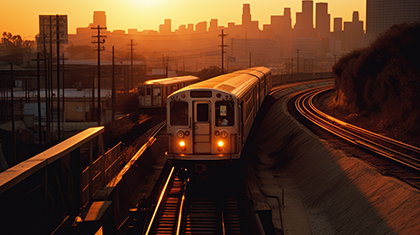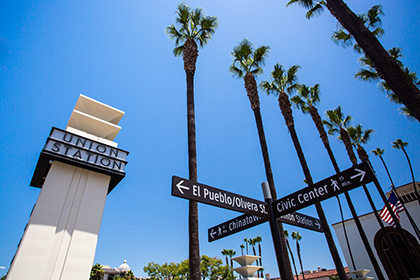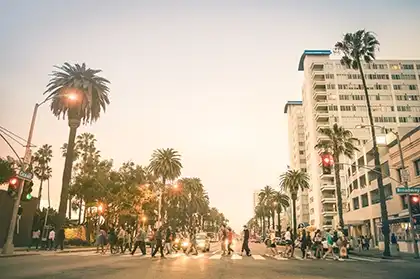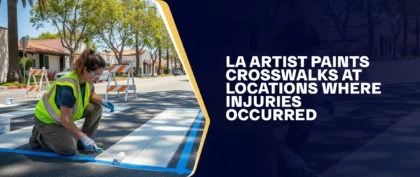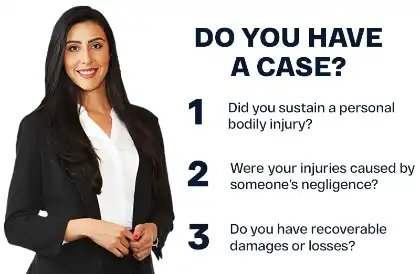Table of Contents
Los Angeles tourists often wonder whether renting a car is necessary or if they can navigate the city without one. The good news is that it is possible and a more sensible choice, especially if you plan to focus on exploring specific areas or find the idea of driving in an unfamiliar city daunting. Los Angeles provides an excellent alternative in the form of the Metro Red Line Tour. Through the L.A. Metro subway and overground train system, the city allows travelers to access numerous attractions with ease.
For those seeking car-free itineraries, L.A. Tourism offers “Car-Free LA,” a collection of self-guided vacation plans designed for exploring the rich diversity of the city’s neighborhoods on foot, by bike, and by Metro. By thoughtfully planning your trip, you can craft a car-free itinerary that can help minimize travel time. This approach enables you to uncover hidden gems throughout the city without the inconvenience of a car, all while enjoying the convenience of public transportation.
However, it’s essential to acknowledge that accidents can occur at any moment, leaving individuals needing legal assistance. Our Los Angeles personal injury lawyers have years of experience offering legal support to injured clients and advocating for their rights.
Exploring Los Angeles without a car offers several advantages, but it is also important to be prepared for unexpected incidents and to have access to legal support if needed. Call us at (888) 488-1391 for a free initial consultation. We can help you navigate the legal process and understand your legal options.
Benefits Of Exploring Los Angeles Without A Car
In Los Angeles, where traffic congestion is a well-known problem, navigating the city streets is frequently frustrating and time-consuming. However, by choosing to explore LA without a car, you can not only contribute to reducing traffic congestion but also lower carbon emissions.
Embracing a car-free adventure allows you to immerse yourself in the sights, sounds, and energy of the city in a way that can’t be experienced when confined inside a car. Walking, biking, and using public transportation can help you discover lesser-known places, interact with locals, and engage with the city’s vibrant culture.
Public Transportation Options In Los Angeles
The Los Angeles Metro is designed to provide affordable, easy-to-use public transportation to most of LA and its major attractions.
It is recommended to purchase a reusable TAP Card to ride the city’s system of buses, trains, and subways. Your TAP Card can be loaded with preset cash values and used on all three systems as needed. It’s easy to add extra cash as well.
Lastly, using the MTA’s Trip Planner, you can plan your trip routes and estimate travel times.
Metro Buses
The Metro Bus System provides 200 different lines that cross the entire city and beyond. There are three types of Metro Bus services to be aware of while using the system.
- Local Buses — Painted orange and frequently stop at major tourist attractions and districts around the city.
- Rapid Buses — Painted red and stop less frequently, allowing for an express service. These buses have special sensors that keep the lights green to avoid traffic jams. Before traveling, check the Rapid Bus schedules and routes to determine whether it is suitable for your travel needs.
- Express Buses — Painted blue and are typically used by LA commuters. These buses travel along some of the city’s freeways, connecting Downtown LA with other business districts.
Metro Rail
There are two subway lines, four light rail lines, and two express bus lines connecting Downtown Los Angeles to the railway system.
- Red Line (B Line) — Connects Downtown Union Station to North Hollywood via Hollywood and Universal City, linking with the Blue (A), Expo (E), and Orange (G) lines.
- Purple Line (D Line) — Connects Downtown Los Angeles, Westlake, and Koreatown.
- Expo Line (E Line) — Connects Downtown LA, USC, Exposition Park, Culver City, and Santa Monica.
- Blue Line (A Line) — Light rail from Downtown LA to Long Beach, connecting with the Green (C), Red (B), and Expo (E) lines.
- Gold Line (L Line) — Light rail connecting East LA, Union Station, Chinatown, and Pasadena.
- Green Line (C Line) — Light rail serving Norwalk and Redondo Beach.
- Orange Line (G Line) — Bus rapid transit connecting the San Fernando Valley and North Hollywood.
- Silver Line (J Line) — Bus rapid transit connecting El Monte Station to Harbor Gateway Transit Center.
DASH Buses

- Beachwood Canyon Route — Taking you directly to the Hollywood Sign, this route runs from Hollywood Boulevard and Vine Street up to Beachwood Drive, Monday to Saturday.
- Downtown Routes — These five routes run daily and provide access to all the hot spots in Los Angeles, including Little Tokyo, Chinatown, the Financial District, and Union Station.
- Fairfax Route — This route runs from Monday to Saturday and makes a round trip around Beverly Hills Central Mall, Pacific Design Center, Melrose Avenue, the Grove, and Museum Row.
- Hollywood Route — The route runs daily along Highland Avenue and Hollywood Boulevard on the east side.
Here Are Some Excellent Places To Visit Without A Car In Los Angeles
The Grammy Museum
Located in Los Angeles, the Grammy Museum offers four floors dedicated to the history of popular music, starting with the first homemade bottleneck guitar up to the latest technology-driven hip-hop and dance music.
Space Shuttle Endeavour
The California Science Center became the permanent home for the space shuttle Endeavour. This battle-scarred behemoth of space is truly amazing, with the indestructible hull inscribed with the names of every orbital mission it has accomplished. The museum’s docents are many veterans of the space program who are willing to share their personal experiences and memories with museum visitors.
Old Town Pasadena
An Old Town stroll in Pasadena offers world-class dining, shopping, theaters, and art galleries, and a glimpse into Southern California’s history preserved in its architecture along historic Route 66. Another great car-less experience is the annual New Year’s Day Rose Parade held on Colorado Blvd every January 1st.
Hollywood Boulevard
A short walk from the Hollywood/Highland Red Line Metro Station will lead you to famous Hollywood attractions like the TCL Chinese Theatre with celebrity footprints, the Egyptian Theatre, Madame Tussauds wax museum, the Dolby Theatre, where the Oscars are held, and the El Capitan Theatre for a free Jimmy Kimmel Live taping.
Korean Spas
In Koreatown, you can find a variety of reasonably priced spas. Korean spas are not exclusive experiences reserved for the rich; they are welcoming environments where family and friends can relax, unwind, and socialize. Grab a bite of America’s Korean bulgogi when you’re in K-Town.
Is Los Angeles Public Transportation Good?
Los Angeles is home to a wide variety of theme parks, museums, bars, clubs, restaurants, and movie studios. Because of this, the transportation system of a city like LA should not be compromised. The public transit system offers an alternative for navigating the city, although many residents also rely on personal vehicles and rideshare services.
In Los Angeles, you do not need a car to enjoy the city, as there are a number of local transportation options. Here are a few ways to get around the city without a car.
- Metro Rail and Metro Bus — As part of the Los Angeles Metro system, there are both subway and light rail lines, as well as an extensive bus network covering the entire city. In addition to connecting key areas, the Metro Rail has several lines, including the Red Line (Hollywood, Downtown), Purple Line (Koreatown), Blue Line (Long Beach), Expo Line (Santa Monica), and more. The Metro bus system complements rail service and serves neighborhoods that are not directly accessible by rail.
- Taxis and Rideshare Services — Getting around the city is convenient and easy with rideshare services like Uber and Lyft. Taxis are also available, although they may be more expensive than ridesharing services.
- Biking — It is very common to ride a bike in many parts of Los Angeles, with dedicated bike lanes and bike-sharing programs, including Metro Bike Share and LimeBike. There are beachfront paths that can be explored on bikes or rented for short trips.
- Walking — The best way to explore and experience the local culture is by walking through neighborhoods like Downtown LA, Hollywood, Santa Monica, and Venice Beach. The pleasant weather in LA makes it an ideal place to walk any time of the year.
- Commuter Trains — The Metrolink commuter train links LA to neighboring counties, providing access to Disneyland (Anaheim), Universal Studios (Universal City), and other popular attractions.
- Shuttles and Free Trolleys — It is common for some areas to provide free shuttle services or trolleys to assist visitors in navigating particular neighborhoods or attractions. One example is Santa Monica’s Big Blue Bus, and some areas offer free trolleys to help visitors navigate certain neighborhoods or attractions.
- Tourist Buses and Tours — Take guided tours, hop-on-hop-off buses, or tourist shuttles to explore popular attractions.
- Renting a Bike or Scooter — Electric scooters are available for rent from companies such as Bird, Lime, and Jump across the city, providing a convenient and fun method of covering short distances.
Is It Safe To Walk In Los Angeles?
Safety while walking in Los Angeles largely depends on the areas you visit. In places where you find restaurants and bars, things generally seem fine. Law enforcement is diligent in patrolling these popular areas, helping to maintain a reasonable level of security for residents and visitors alike.
While it’s true that you may encounter some individuals experiencing homelessness or loitering on the streets, this is a common occurrence in major downtown areas across the United States. The key is to exercise caution and awareness of your surroundings, as you would in any urban environment, and to respect the city’s diversity and the challenges it faces. In essence, you can still enjoy your time in L.A. by staying in well-frequented areas and exercising sensible precautions.
The Best Areas To Stay In Los Angeles Without A Car
- Downtown Los Angeles (DTLA) — There are many attractions in Downtown LA, including Walt Disney Concert Hall, Olvera Street, and the Broad Museum. You can also take the Metro Rail from here to explore other parts of the city.
- Hollywood — Tourists are attracted to Hollywood by the Walk of Fame, Grauman’s Chinese Theatre, and the Hollywood Bowl. Metro Red Line connections make exploring other parts of the city easier.
- Santa Monica — Santa Monica is a good choice for those seeking proximity to the beach. The Santa Monica Pier, Third Street Promenade, and the Expo Line connect Santa Monica with Downtown Los Angeles.
- Venice Beach — In Venice Beach, you will find a laid-back, beachfront community with a lot of character, featuring a famous boardwalk, street performers, and Muscle Beach Gym.
- West Hollywood — Melrose Avenue, Sunset Strip, and vibrant nightlife make West Hollywood (WeHo) so popular. It’s a great place to explore nearby attractions like the Los Angeles County Museum of Art (LACMA) and enjoy the entertainment scene.
Consult With Our Personal Injury Attorneys For Your Lawsuit In Los Angeles
When seeking legal representation for a personal injury accident in Los Angeles, there are several factors to consider in order to find dedicated legal representation. These factors often include the lawyer’s experience in similar cases, their track record, and their communication style.
In California, our attorneys at Arash Law have years of experience helping clients seek compensation for their injuries and losses. We offer personalized legal support and are committed to advocating for your rights through negotiations and litigation. Our team handles a wide range of personal injury cases, including car accidents, rideshare collisions, speeding-related crashes, and dog bites.
Contact us at (888) 488-1391 or complete our “Do I Have A Case?” form here for a free initial consultation. During this meeting, our legal team will discuss the specifics of your case, assess its merit, and outline the attorneys’ fees and other relevant costs.

